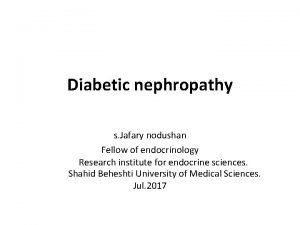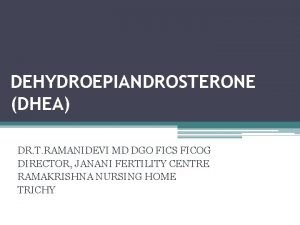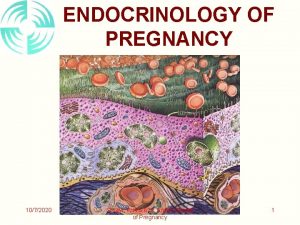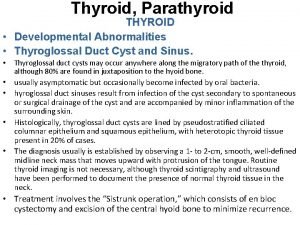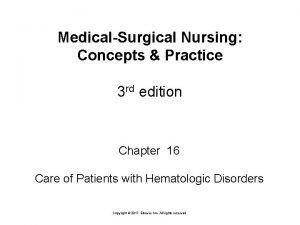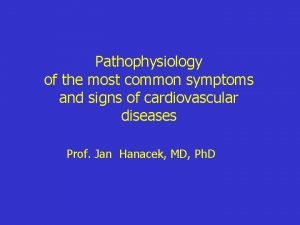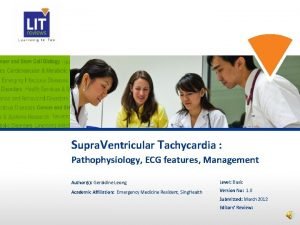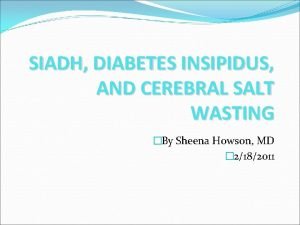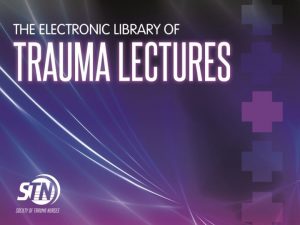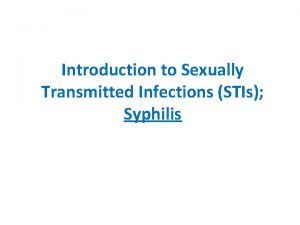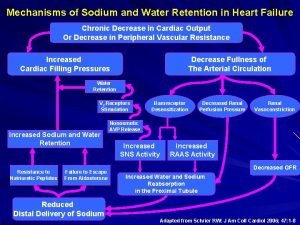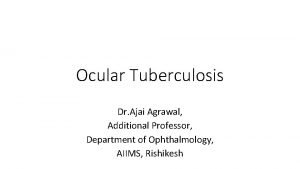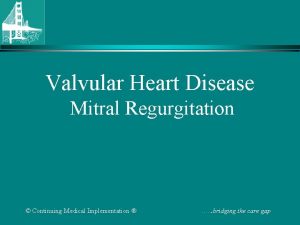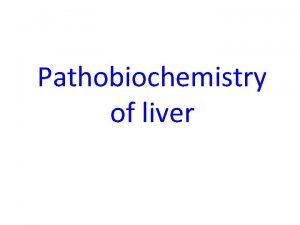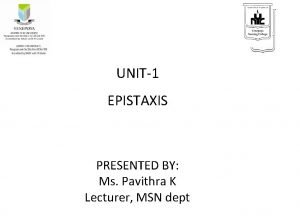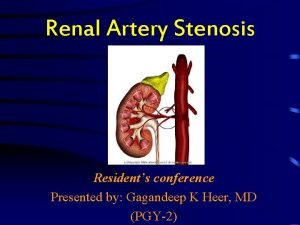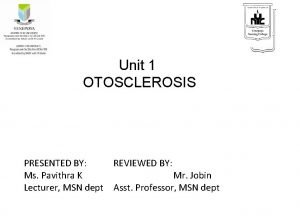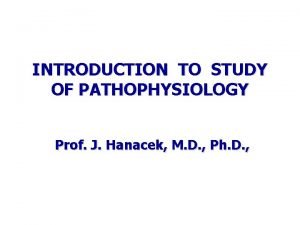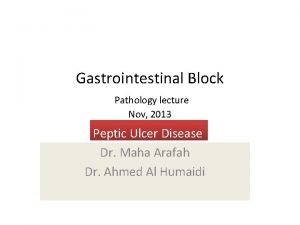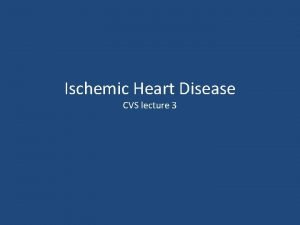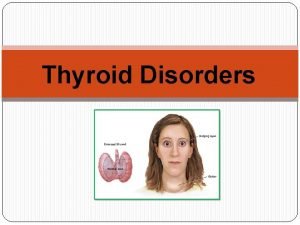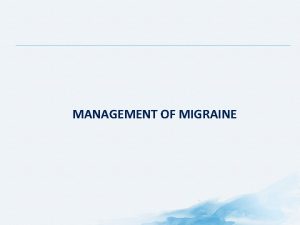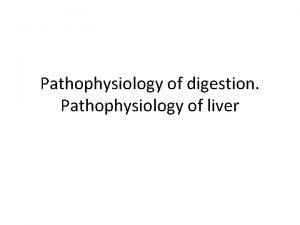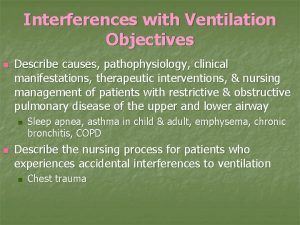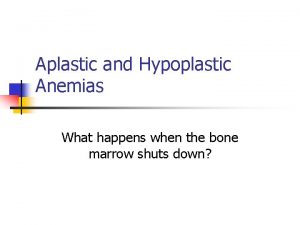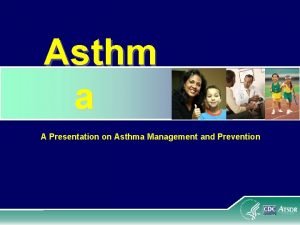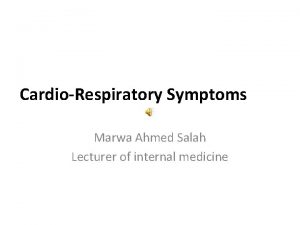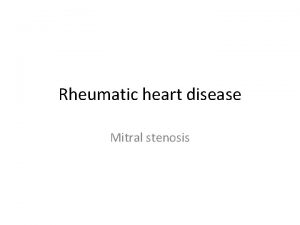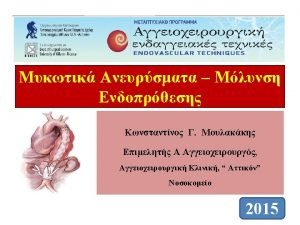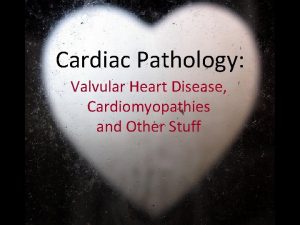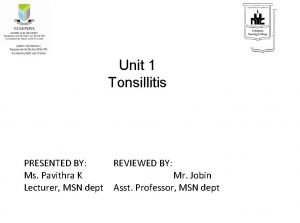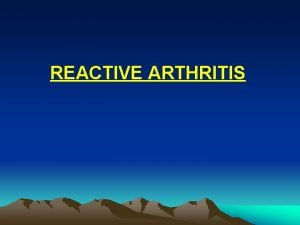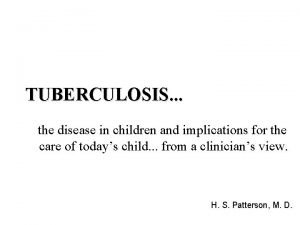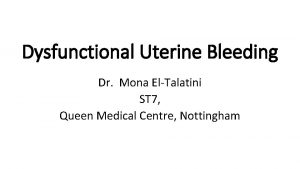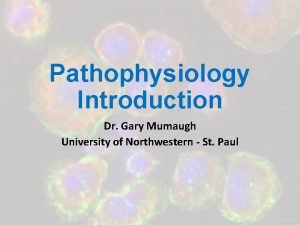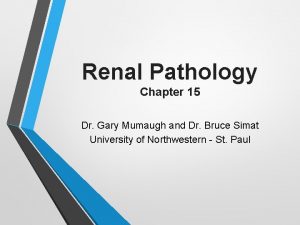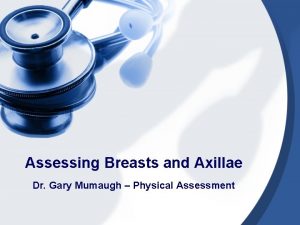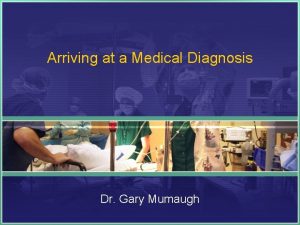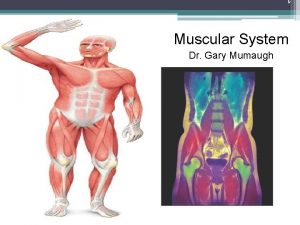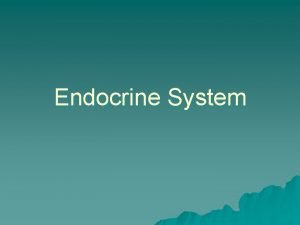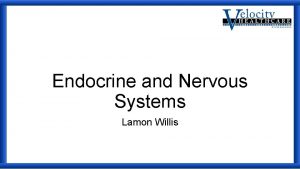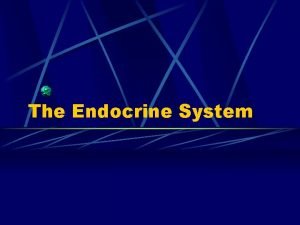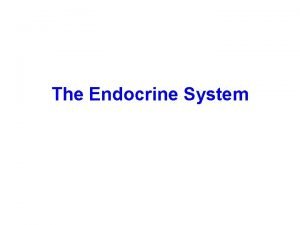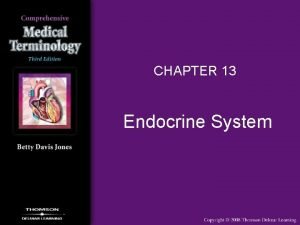Endocrine Pathophysiology Dr Gary Mumaugh Essentials of Endocrinology
































































- Slides: 64

Endocrine Pathophysiology Dr. Gary Mumaugh

Essentials of Endocrinology • Main function: releases hormones to control cellular activities of target cells • Autocrine cells: secrete substances that control their own function • Paracrine cells: secrete hormones that diffuse to adjacent cells and regulate their action

Essentials of Endocrinology • Neuroendocrine: nervous system exerts regulatory and control functions on endocrine glands • Tropic hormones: secretions that influence the secretions of another endocrine gland (ex. releasing hormones from hypothalamus to anterior pituitary)


Endocrine Specificity • Most hormones are delivered to their target tissues via the bloodstream, where they bind to a receptor. • Intracellular receptors: steroid and thyroid hormones pass through cell membrane and bind to receptors in the cytoplasm o Cause increase in the production of enzymes that enhance a metabolic pathway’s activity, altering the target tissue’s function

Endocrine Specificity • Membrane receptors: binding site for protein, peptide, and amino acid hormones, which cannot enter the cell o Hormones active receptor systems - G proteins or protein kinases o Alter cytoplasmic concentrations of molecules or ions on which cell processes depend • Hormone binding to either type of receptors causes alteration of the target cell’s level of activity.

Plasma Hormone Level • Plasma hormone level determined by rate of entering and leaving the blood o Rate of entering blood stream determined primarily by secretion rate. • 2 components: o Hormone synthesis from dietary or endogenous precursors o Rate of release from the endocrine cell

Plasma Hormone Level • Cleared from blood stream either by inactivation or excretion o Inactivation at target tissue into nonfunctional forms or in liver into chemically converted inactive forms o Excretion by kidneys • Increased binding rates at target cell induce an increased response.

Endocrine Dysfunction • 2 types of dysfunction: – Hypofunction – Hyperfunction • These two concepts are the basis for much of endocrine pathophysiology and should be the first factors considered in clinical situations.

Elevated or Depressed Hormone Levels • Failure of feedback systems • Dysfunction of an endocrine gland • Secretory cells are unable to produce, obtain, or convert hormone precursors • The endocrine gland synthesizes or releases excessive amounts of hormone • Increased hormone degradation or inactivation

Endocrine Hypofunction • Defined as inadequate target tissue response • Causes: hyposecretion or hormone resistance • Hyposecretion may be due to: o Agenesis: lack of gland development o Genetic defect that prevents hormone synthesis o Dietary deficiency

Endocrine Hypofunction • Atrophy of the endocrine gland. • Replacement of normal endocrine tissue with tumor tissue. • Surgery to remove part of a over-secreting gland. • Damage to a functioning gland that is then unable to maintain secretions. • Often accompanied by high levels of control hormones

Endocrine Hypofunction • Decreased or insufficient function of gland • Hormone resistance: insensitivity of a target tissue to its hormone • May be due to: o Hereditary defect that affects the tissue’s ability to synthesize hormone receptors o Autoimmune mechanism in which an antibody binds to the hormone receptors o If faced with a chronically elevated hormone level, the target tissue might reduce the number of hormone receptors

Endocrine Hyperfunction • Exaggerated target tissue responses • Usual cause: hypersecretion - circulating hormone is present in inappropriately high levels o Causes of hypersecretion: § Exposure to high levels of tropic hormones § Defective feedback control § Tumors in the gland- occurs if neoplastic cells retain the ability to secrete functional hormone • Signs and symptoms of endocrine diseases are often puzzling because of altered functions in

Alterations of Thyroid Function • Hyperthyroidism o Thyrotoxicosis o Graves disease o Hyperthyroidism resulting from nodular thyroid disease o Manifestations related to hypermetabolic state o Thyrotoxic crisis

Hyperthyroidism • Thyroid gland produces thyroxine hormone • An autoimmune disorder • Significantly accelerates metabolism o Sudden weight loss, a rapid or irregular heartbeat, sweating, nervousness or irritability o Fatigue, muscle weakness, difficulty sleeping o Tremor, sweating o Changes in menstrual patterns o Increased sensitivity to heat • 8 times more common in women


• Etiology of Grave’s Disease o For autoimmune reasons, a group of B lymphocytes secrete Ig. G which fits into and stimulates the TSH receptors present on cell membranes which increases the production of thyroid hormone.


• The characteristic exopthalmus is caused by inflammation of the tissue lining the orbit and extraocular muscles. This causes edema and swelling and fibrosis. • The increased metabolic rate increases appetite and weight gain. The increased rate increases O 2 consumption and patient is short of breath. • Increased sympathetic stimulation is present.

• Causes o Graves' disease, an autoimmune disorder, is the most common cause of hyperthyroidism § Antibodies produced by your immune system stimulate your thyroid to produce too much thyroxine o Hyperfunctioning thyroid nodules o Thyroiditis • Diagnosis o o Radioactive iodine uptake test Thyroid scan Increased T 3 & T 4 Increased ANA titers


Thyrotoxicosis (Graves Disease)

Hypothyroidism �Low levels of thyroid hormones �Thyroxine (T-4) and Triiodothyronine (T-3) �Causes of hypothyroidism �Autoimmune disease - Hashimoto thyroiditis �Treatment for hyperthyroidism �Radiation therapy �Thyroid surgery �Medications (lithium) �Less common causes �Congenital disease �Pituitary disorder �Iodine deficiency �Pregnancy

• Etiology of Hypothroidism • Iodine is essential component to synthesize T 3 & T 4 • As the thyroid hormone levels fall in the blood, the pituitary produces more TSH, which generates enlargement of thyroid goiter • In some areas low in iodine it is called endemic goiter

• Pathophysiology of Hypothroidism • Develops slowly with an insidious onset • The lowered metabolic rate causes weight gain, lethargy, tiredness, difficulty concentrating, and cold. • Can affect the adult brain leading to memory loss, slowed mentation, depression and paranoia. • Severe cases is called myxedema madness • Decreased metabolic rate reduces heart rate and stroke volume and over time can cause cardiomegaly. • Decreased metabolic rate causes decreased GI function and decreased sexual function.

• Hypothroidism in pregnancy is serious – Thyroid hormones are essential for development and maturation of the infant and child’s brain. – Called cretinism in children • Stunted growth, large head, learning difficulties, dwarfism, pug nose, short neck.

Cretinism: hypothyroid in newborns • Effects if untreated: physical and mental retardation, and stocky, thick body with infantile proportions

�Risk factors �Mainly in women over 50 �Close relative, with an autoimmune disease �Prior treatment with radioactive iodine or antithyroid medications �Received radiation to your neck or upper chest �Have had thyroid surgery (partial thyroidectomy)

�S & S �Tiredness, weakness, slow reaction time, hypotension, cold intolerance, weight gain even when dieting �Sluggishness, constipation, muscle weakness �Joint pain, stiffness and swelling �Brittle fingernails and hair �Depression

Manifestations of Thyroid Alterations

Goiter: thyroid gland enlargement • Diffuse colloid goiter: generalized enlargement of the thyroid due to increased thyroid stimulating hormone secretions. • Multinodular goiter: nodules form from follicular atrophy and fibrosis • Nontoxic goiter: enlarged gland but hyposecretes hormones • Hashimoto’s Thyroiditis: inflammatory cells overtake functional tissue

33

• Hypothyroidism o Myxdema: chronic hypothyroid in adults causes glycoproteins to be deposited in the dermis • Facial puffiness is characteristic sign • May lead to myxdema coma- can be fatal


Pancreatic Islet Cells • Function: regulate blood glucose levels through the production of insulin and glucagon • Diabetes Mellitus: most common endocrine disorder • Two forms, with differing pathogenesis: o Juvenile onset DM, type I DM, insulindependent DM o Maturity onset DM, type II DM, non-insulindependent DM

Type 1 Diabetes Mellitus • Genetic susceptibility • Failure of beta cells by autoimmune destruction, requires insulin therapy • Immunologically mediated destruction of beta cells • Manifestations: – – – Hyperglycemia Polydipsia Polyuria Polyphagia Weight loss Fatigue

Type 2 Diabetes Mellitus • Beta cells lose their capacity to produce insulin slowly while target tissue also show reduced sensitivity • Can be controlled with diet and exercise for a while, insulin therapy required less often • Maturity-onset diabetes of youth (MODY) • Gestational diabetes mellitus (GDM) • Common form of diabetes mellitus type 2

Type 2 Diabetes Mellitus • Initial insulin resistance • Later loss of beta cells • Diagnosis (fasting glucose, postprandial glucose) • Manifestations (non-specific): fatigue, pruritus, recurrent infections, visual changes, or symptoms of neuropathy; often overweight, dyslipidemic, hyperinsulinemic, and hypertensive

• Insulin physiology – Produced by the beta cells in the islets and lowers blood glucose. – When glucose levels rise, this is detected by the beta cells and secretory granules of insulin emerge from the cell membrane. – The insulin then travels in the hepatic portal vein to the liver and then on to all the body tissues in the systemic circulation. – Insulin is eventually removed from the blood by being broken down by the liver and kidneys.

– Insulin lowers blood glucose levels by converting glucose into insoluble glycogen for storage in the liver and muscles. – Insulin is needed to transfer glucose in tissue fluids through a gate into the cytosol of the cell. – Without this insulin action, glucose cannot enter the cell and cannot be used by the mitochondria in energy production. – The irony is that the tissue fluids have to much glucose and the intracellular mitochondria does not have enough.

• Insulin and proteins – Insulin stimulates protein metabolism and increases the movement of amino acid into cells. – Insulin also prevents the catabolism of proteins. • Insulin and fats – Insulin promotes the synthesis of fatty acids and glycerol in the blood causing hyperlipidemia.

• Insulin receptors o Insulin can only exert a physiological effect when it is combined with a specific receptor. These are transmembrane proteins which means that part of the receptor is inside the cell and part is outside the cell.


Chronic Complications of Diabetes Mellitus • Macrovascular disease o Affects large artery walls with fatty deposits that leads to fibrous collagen and plaque formation. o Coronary artery disease o Stroke o Peripheral arterial disease § Leads to ischemia and possible gangrene. • Diabetic neuropathies • Infection

Chronic Complications of Diabetes Mellitus • Microvascular disease – There is a progressive thickening of the basement membranes which narrow the lumen and lowers elasticity. – This leads to localized ischemia and hypoxia, which causes more vascular compromise. – Retinopathy – Diabetic nephropathy

Hypoglycemia • Low blood sugar o Normal levels = 80 -110 mg/d. L o Mild = <80 Significant symptoms <60 • Causes o Most are diabetics with to much insulin usage o Fasting o Alcoholics and liver disease § Drinking alcohol with sugar causes temporarilly o Overeating o Pancreatic tumor o Addison’s disease

• S & S – occurs when blood sugar < 60 mg o o Sweatiness, dizziness, nervousness, shaking Anxiety, faintness, weakness Palpitations, hunger Confusion, inappropriate behavior • Diagnosis o Patient’s history o Glucose tolerance test o Fasting glucose and insulin levels • Treatment o Glucose now!!


Adrenal Cortex • Adrenocortical Hypersecretion (Hyperadrenalism) o Cushing’s Syndrome: cortisol hypersecretion o Hyperaldosteronism: hypersecretion by aldosterone-secreting cells. o Adrenal virilism: androgen hypersecretion in females, induces various masculine traits o Sexual precocity: androgen hypersecretion in young males leads to rapid and premature sexual development

Cushing Disease

Abdominal striae of Cushings

Virilization

Sexual Precocity 9 year old twins 4 year old

• Adrenocortical Hyposecretion (Hypoadrenalism, Addison’s disease) o Corticosteroid deficiency- destruction of cortex or suppression of ACTH by therapeutic doses of glucocorticoids o Characteristic feature: excess pigmentation and high vulnerability to stress


Hyperparathyroidism �Usually caused by a parathyroid adenoma �More common in women �Often causes bone pain from high calcium �Hypercalcemia is also seen in metastatic bone disease (from breast, lung, prostate) and sometimes in pregnancy �S & S �Bones – bone pain from high calcium �Stones – kidney stones common �Groans – pain and slow muscle contractions �Moans – psychiatric and mental changes

Hypoparathyroidism • Often seen after surgery of thyroid and parathyroid o If the parathyroid glands have been removed, then the diagnosis will be permanent • Results in low serum calcium & high serum phosphate • S&S o Low calcium causes muscle cramps, tetany, & paresthesias o Convulsions and arrhythmias o Acute onset, especially after thyroid surgery, could lead to respiratory spasm and suffocation – needing tracheostomy

Hypopituitarism �Pituitary gland fails to produce one or more of its hormones, or doesn't produce enough of them �Causes �Pituitary ademomas �Strokes �Metastatic carcinomas �Primary brain tumors �Autoimmune disorders �Brain trauma �Encephalitis �Idiopathic

Signs & Symptoms �Depending on which hormones are deficient �Fatigue , Headaches , Low tolerance for stress �Muscle weakness , Nausea �Constipation , Weight loss or gain �A decline in appetite , Abdominal discomfort �Sensitivity to cold or difficulty staying warm �Visual disturbances �Loss of underarm and pubic hair �Joint stiffness �Hoarseness �Facial puffiness �Thirst and excess urination �Low blood pressure �Lightheadedness when standing

• Men may experience o Loss of interest in sexual activity o Erectile dysfunction o Decrease in facial or body hair • Women mat experience o Irregular or no menstrual periods o Infertility o Inability to produce milk for breast-feeding • Children may experience o Stunted growth o Short stature o Slowed sexual development

Hyperpituitarism �Excessive production of growth hormone, which continues to be produced well into adulthood �In adults, since the growth plates are closed, excessive levels cause abnormal growth of hands, feet, and internal organs – called acromegaly �In children, excess growth hormone causes increased height known as gigantism �Diagnosis �Elevated GH in blood test �Pituitary tumor on CT or MRI


 Reproductive endocrinology near campbell
Reproductive endocrinology near campbell Dr schwartz betsy
Dr schwartz betsy Endocrinology
Endocrinology Tabel kelenjar endokrin dan hormon yang dihasilkan
Tabel kelenjar endokrin dan hormon yang dihasilkan Endocrinology of pregnancy
Endocrinology of pregnancy Reproductive biology and endocrinology
Reproductive biology and endocrinology Endocrinology of pregnancy
Endocrinology of pregnancy Thyroglossal cyst pathophysiology
Thyroglossal cyst pathophysiology Pathophysiology of anemia diagram
Pathophysiology of anemia diagram Paroxysmal nocturnal dyspnea pathophysiology
Paroxysmal nocturnal dyspnea pathophysiology Vagal maneuvers
Vagal maneuvers What is pathophysiology
What is pathophysiology Siadh vs diabetes insipidus
Siadh vs diabetes insipidus Glucoma agudo
Glucoma agudo Pulmonary toilet
Pulmonary toilet Pathophysiology of appendicitis
Pathophysiology of appendicitis Secretory diarrhea pathophysiology
Secretory diarrhea pathophysiology Pathophysiology of hiatal hernia
Pathophysiology of hiatal hernia Homocystinuria pathophysiology
Homocystinuria pathophysiology Lund and browder chart
Lund and browder chart Pathophysiology of syphilis
Pathophysiology of syphilis Pathophysiology of sodium and water retention
Pathophysiology of sodium and water retention Pathophysiology of valvular heart disease
Pathophysiology of valvular heart disease Burn injury pathophysiology of burns
Burn injury pathophysiology of burns Pathophysiology of tuberculosis flow chart
Pathophysiology of tuberculosis flow chart Mitral regurgitation symptoms
Mitral regurgitation symptoms Hepatic sinusoids
Hepatic sinusoids Pathophysiology of epistaxis
Pathophysiology of epistaxis Definition of acute appendicitis
Definition of acute appendicitis Hypertension urgency vs emergency
Hypertension urgency vs emergency Etiology of bronchial asthma
Etiology of bronchial asthma Otosclerosis pathophysiology ppt
Otosclerosis pathophysiology ppt Pathophysiology of pulmonary hypertension
Pathophysiology of pulmonary hypertension Examples of pathophysiology
Examples of pathophysiology Morphology of peptic ulcer
Morphology of peptic ulcer Pathophysiology of hirschsprung disease
Pathophysiology of hirschsprung disease Pathophysiology of ischemic heart disease
Pathophysiology of ischemic heart disease Thyroid
Thyroid Migraine management guidelines
Migraine management guidelines Digestion
Digestion Interruption of the aortic arch
Interruption of the aortic arch Pain pathophysiology
Pain pathophysiology Asthma pathophysiology
Asthma pathophysiology Ttn vs rds cxr
Ttn vs rds cxr Pathophysiology of aplastic anemia
Pathophysiology of aplastic anemia Pathophysiology of asthm
Pathophysiology of asthm Stage of shock
Stage of shock Heparinq
Heparinq Paroxysmal nocturnal dyspnea pathophysiology
Paroxysmal nocturnal dyspnea pathophysiology Malar flush pathophysiology
Malar flush pathophysiology Stent graft
Stent graft Incarcerated hernia symptoms
Incarcerated hernia symptoms Pathophysiology of valvular heart disease
Pathophysiology of valvular heart disease Borborygmi
Borborygmi Site:slidetodoc.com
Site:slidetodoc.com Magic box respiratory therapy
Magic box respiratory therapy Electrocauterization
Electrocauterization Case mysteries in pathophysiology (doc or html) file
Case mysteries in pathophysiology (doc or html) file Reactive arthritis pathophysiology
Reactive arthritis pathophysiology Egfr calculation formula
Egfr calculation formula Asthma pathophysiology
Asthma pathophysiology Primary complex
Primary complex Uterine bleeding
Uterine bleeding Acute pancreatitis nursing management
Acute pancreatitis nursing management Scarred gallbladder
Scarred gallbladder


